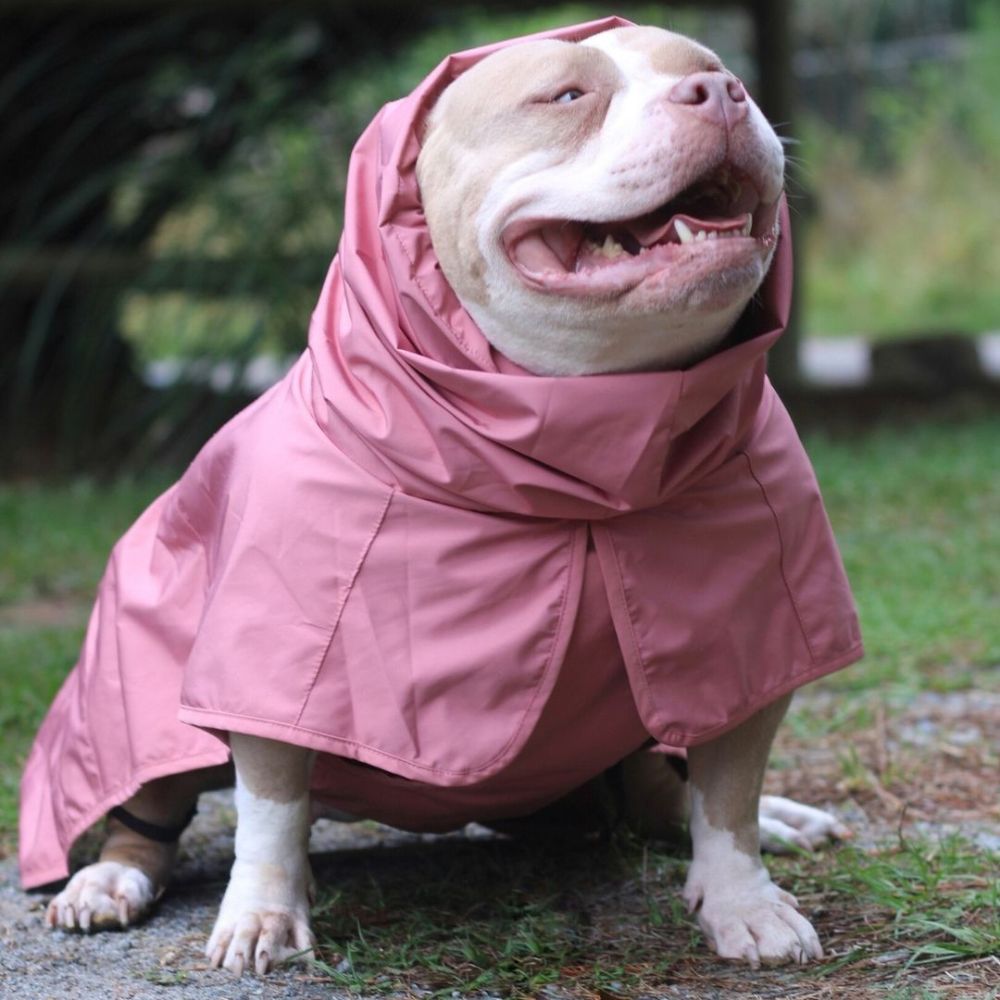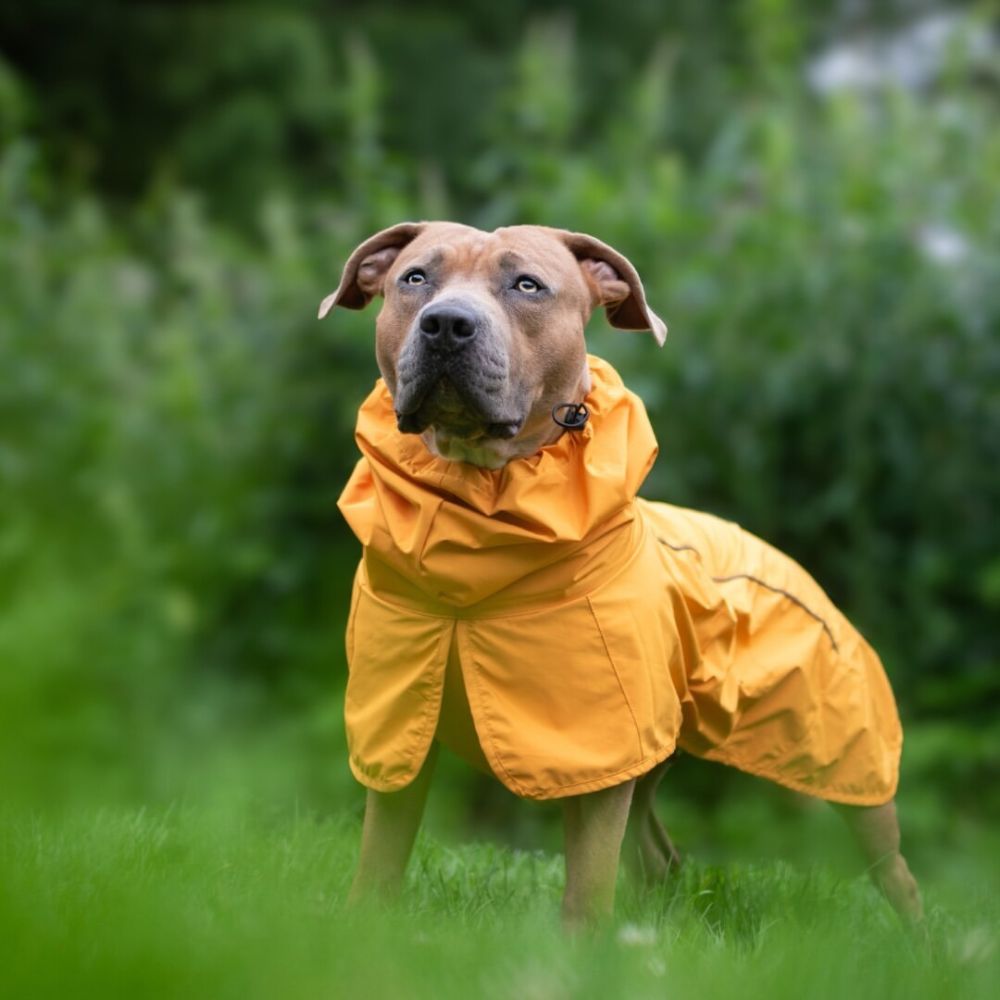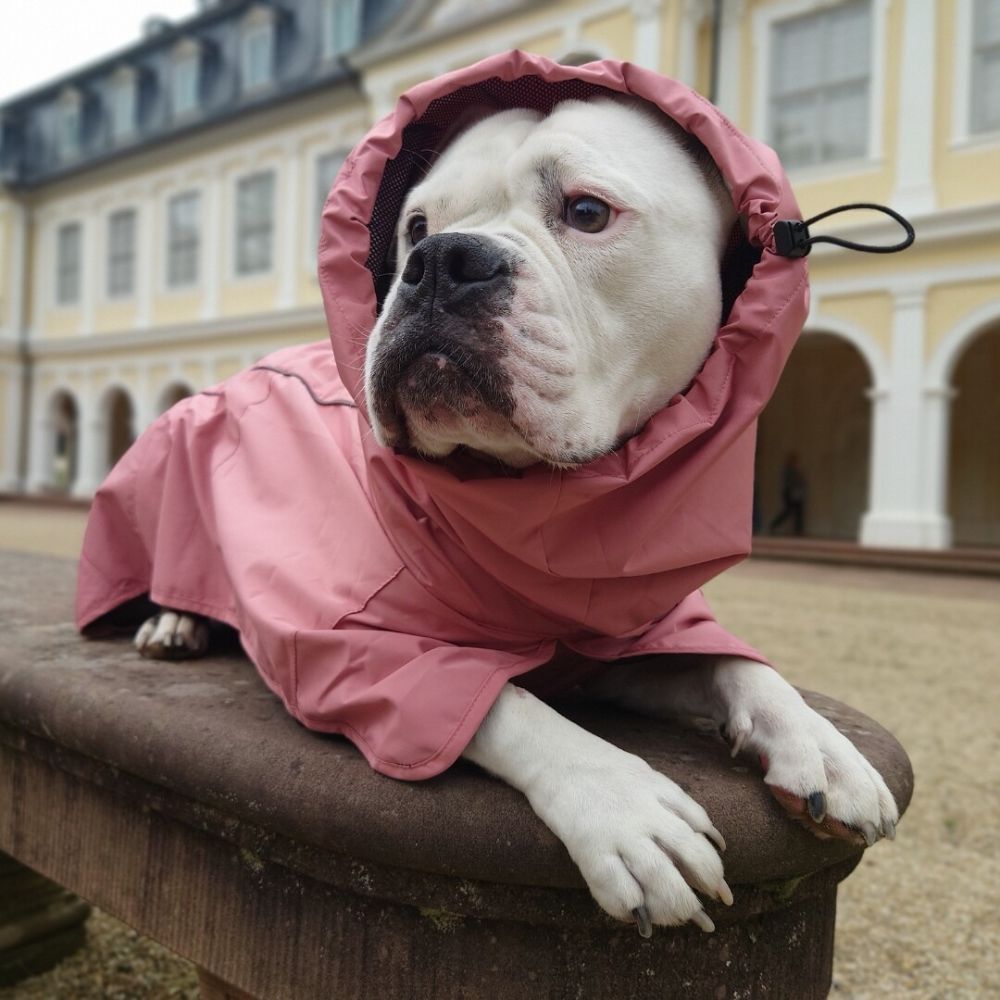Choosing the Best Dog Raincoats
Nobody likes being cold and wet. A dog that likes jumping in rivers may not like the idea of walking along a rainy, gray sidewalk.
This is why dog raincoats have become more popular as of late to keep your dog warm and dry and ward off the worst of that ‘wet-dog smell’.
However, how do you know what makes for a good raincoat? What should you be considering when giving your furry friend the best?
Does My Dog Really Need a Dog Raincoat?
Good question.
Most dogs don’t mind getting a bit damp, but if you are planning a long walk or if there is a chance of your dog getting soaked without much chance of drying off (like on a hike or camping trip) then a dog raincoat is a good idea.
A dog rain jacket can help keep your dog warm and dry, which can help them stay comfortable and put less strain on their immune systems.
However, some dogs do better or worse in wet weather than others. You should consider investing in a dog raincoat if your dog is very young, old, pregnant, sickly, or suffers from chronic allergies or infections. These dogs are the most vulnerable to the effects of rainy days.
Certain breeds may also have a harder time in cold weather, especially on rainy days. Small breeds with little mass-to-weight ratio, such as chihuahuas and Pomeranians, are more likely to suffer from the cold.
Very fluffy breeds may have a difficult time drying off, putting them at risk for disease, and short-coated dogs will feel the cold and the wet quite quickly. Short-legged breeds are also more likely to get soaked.
Some dogs also just find the rain more uncomfortable than others[1]. Take some time to check if your dog is one of the breeds that does badly in the rain.
Qualities of a Good Dog Raincoat
Material
A dog raincoat that lets in, or worse, soaks up water, is about as useful as a chocolate frying pan. There’s a reason you can’t just slap on a doggy sweater and go.
Naturally, dog raincoats should be waterproof, or at least as water-resistant as possible. However, thick rubbers or plastics could also be stiff, making it difficult to move around on a walk or be very stifling for a dog.
This means that the best dog raincoats should be made from breathable and waterproof materials such as nylon, polyester, or canvas-like materials. These would offer the most protection while still affording freedom of movement and breathability.
A raincoat might also have a soft, comfortable inner layer for cold protection, such as a layer of sheep wool or fleece - but this isn’t strictly necessary, since you could just put a vest or coat underneath if the weather permits.
Some materials, like rubber, can also get quite heavy, especially for smaller breeds. There is no point in buying a thick and heavy raincoat that your dog is just going to become exhausted in.
The Fit
A good dog rain jacket should fit well. This means making sure it fits snuggly around the dog’s body without being too tight.
Since most waterproof materials are non-stretchy, it's a good idea to find a raincoat in the right size, preferably one with adjustable straps so that it can be as tight or as loose as you need. This is important if it doesn’t come with an inner layer so that you can layer a sweater underneath if it's a cold day.
A quality that’s unique to raincoats is that they should cover as much of the dog as possible. This means that it is a good idea to find one that covers the dog’s chest - this belly coverage will prevent puddles, splashback, and mud from getting on the dog’s chest and stomach. Many raincoats have elastic leg loops to secure them.
The dog’s neck, and preferably the dog’s head too, should also be covered so that water doesn’t run down into the coat. A dog’s ears can be quite sensitive to cold and wetness.
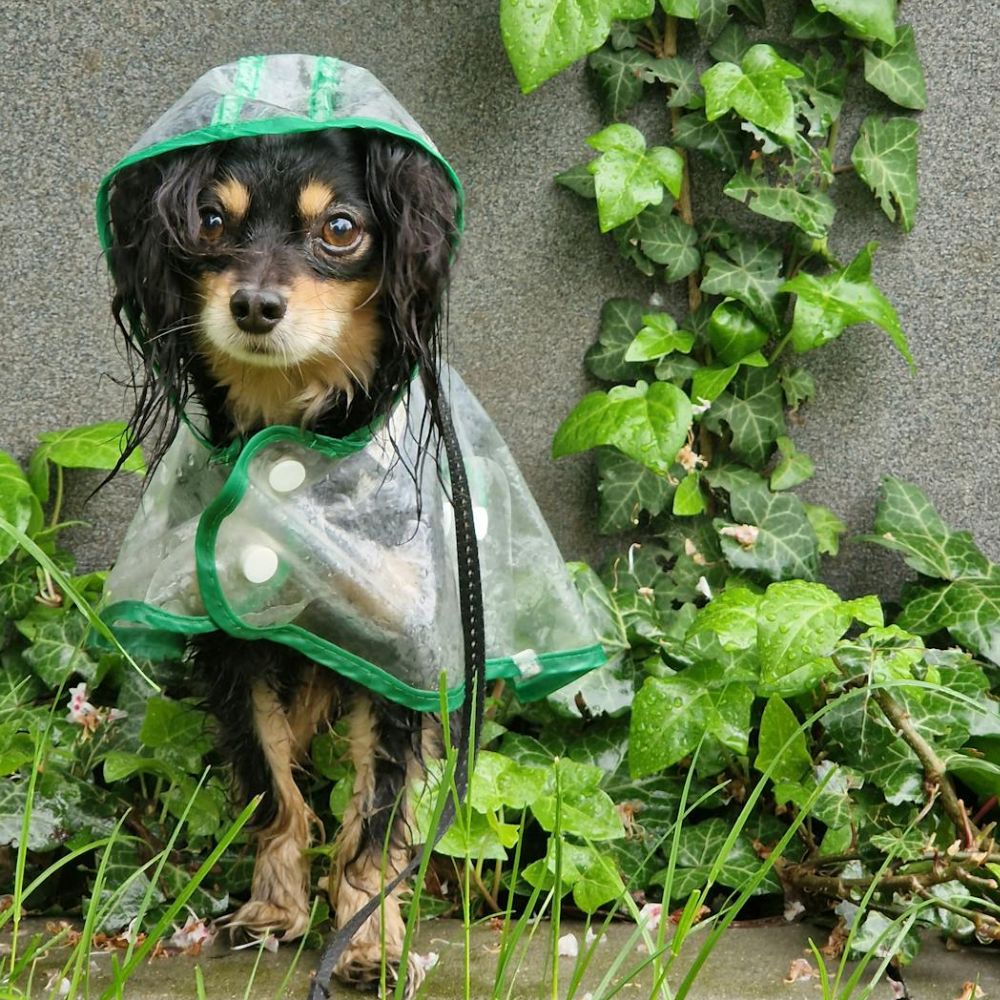
No dog coat, raincoats included, should ever restrict movement, chafe the dog’s fur, or prevent them from being able to use the bathroom easily. Since belly coverage is important, this makes choosing the right size of rain jacket is important.
It's a good idea to go slightly larger so that you can still include a harness or a jacket for walking. You would also want to find one that has a protected leash hole. The leash hole should allow the leash to connect without letting in too much water.
Comfort
A dog rain jacket should put the dog’s comfort and safety above all else. While rain can make things cool, a stifling rubber coat in a humid summer storm might bake the poor dog.
Dog fur can keep the heat in, but an undercoat can also trap the cooler air and help a dog stay cool in hot and humid conditions.[2] Stifling this coat by completely covering the dog could actually put your dog at risk of overheating, even on a cooler day. This is why breathable fabric is so important.[3] A good dog rain jacket should keep a dog dry and cozy without suffocating their fur.
Most raincoats come with a hood to keep the head dry. This is a good addition, but avoid choosing a very loose hood that could block the dog’s vision, this could cause the dog to panic or even place themselves in a dangerous situation.
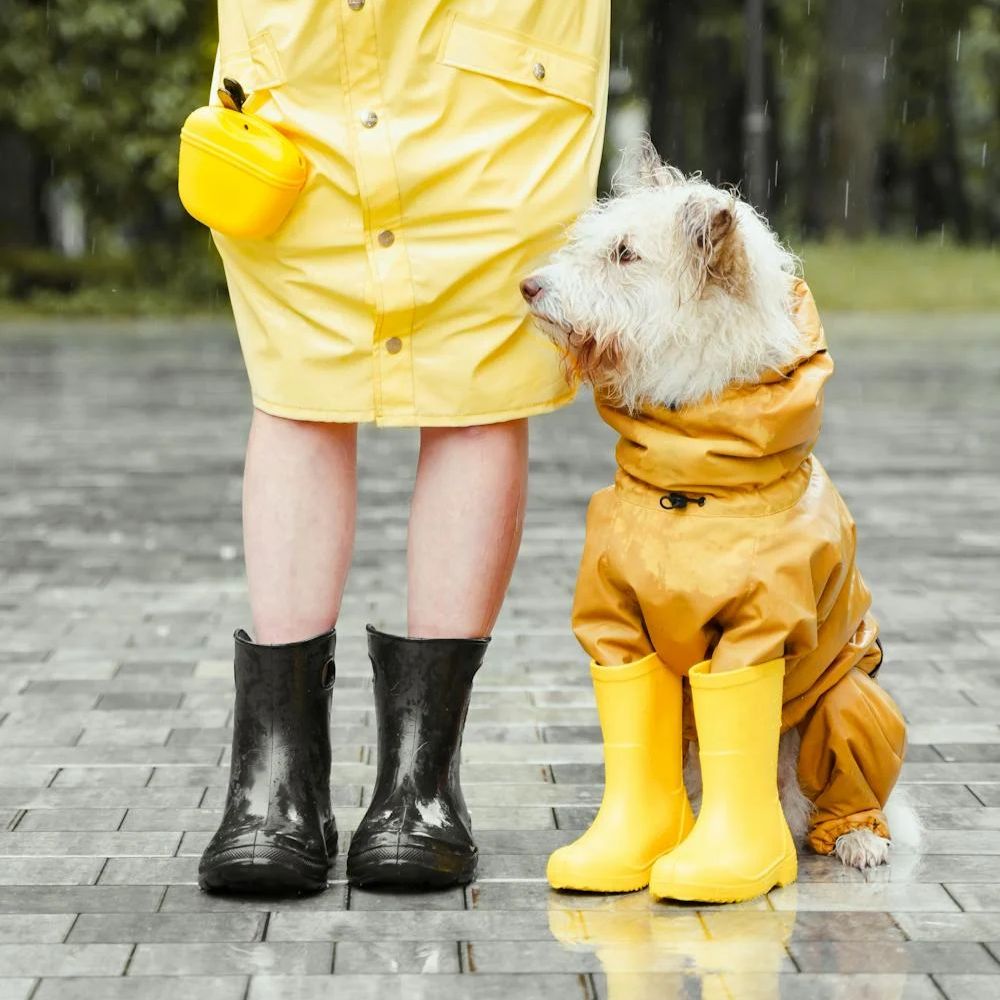
Easy to Get on and Off
The key to a good raincoat is balance. You want a coat that’s going to keep your pup dry, protecting as much of their bodies, heads, and legs as possible. However, an all-encompassing raincoat will be quite uncomfortable.
If a raincoat is too difficult to get off, then you’re likely just going to dump all of the collected water on your dog and the floor and create a mess anyway. For instance, Sparkpaws raincoats have easy side-clipping for quick removal.
It is better to aim for a coat that offers some customizability with straps and clips rather than one that has to be pulled over. A ‘tent’ design, where the raincoat flares a bit, allowing the water to pour off may also be more comfortable and dryer than one that wraps tightly around all of the limbs.
Rubber and canvas coats that don’t come with an inner lining could catch and pinch on fur, or rub against a harness worn underneath. This is uncomfortable for the dog, generates static, and could even cause skin and coat problems…especially if any water has gotten inside the coat. Always look for a dog rain jacket with a soft or non-stick inner lining.
Style and Color
Color goes beyond the aesthetic when choosing a dog rain jacket. Many dogs go missing in stormy and rainy weather, and visibility is low on busy roads - especially for a dog that stands below the eyeline.
It is because of this that choosing a raincoat that is bright or reflective is very important. Many dog raincoats will come with a strip of reflective material or a reflective trim of some kind.
It is wise to avoid raincoats that are very pale or see-through as a dog covered in pale pastels or raindrops might suddenly become ‘invisible’ when running on a gray and rainy day. If you live in a forested area then you may also choose to avoid greens and browns.
Your average waterproof raincoat should normally come in bright colors and shiny, reflective material, but always take the time to make sure that it has these functions before you buy. This could be a matter of life and death!
Aftercare and Maintenance For Raincoats and Dogs
No raincoat is a hundred percent guaranteed to keep your entire dog dry. Take the time when you get home to towel them off and ring out any sopping wet fur. This will minimize any risk of them getting sick or cold.
The raincoat should come with cleaning instructions. Normally it's a good idea to wipe them off to remove excess water and mud so they can be easily stored. While some coats may be machine washable, the waterproof coat is likely to be damaged, removed, or cracked by high temperatures and tumbling.
At Sparkpaws we recommend wiping the raincoats down and only washing them if they’ve become noticeably dirty or smelly.
If you must wash, try using an odorless detergent for the sake of your dog. It is recommended to handwash the raincoats to prevent any damage, as well as leave the rain jacket to air dry.
How Does Sparkpaws Measure Up?
How does Sparkpaws compare to the qualities talked about?
Material - Our raincoats are made from waterproof, windproof, lightweight, durable materials that allow for better temperature regulation by allowing excess heat and moisture to escape. All raincoats come with a non-stick mesh lining.
Fit - Our raincoats have an adjustable neck wrap, designed to keep your dog’s neck and face dry without interrupting vision and have an adjustable design to allow the dog to still use the bathroom freely.
Comfort - All raincoats are breathable, and allow enough room for harnesses and warm coats to be worn underneath.
Easy to get on and off - They are easy to put on and take off with a side buckle design that allows you to have control without creating a wet mess.
Style and color - There are a range of colors available, from the classic to the more outlandish, but they all have reflective strips on the side of the raincoat for safety.
Consider checking out our Breatheshield Dog Raincoat Collection and checking out the reviews and offers we have at the moment.

Summary
Raincoats protect dogs from cold and rain and will help them stay comfortable when exercising on rainy days. You should look out for a number of different qualities.
Material - Look for a good, breathable material. Avoid very thick material, such as rubber, that can restrict movement and stifle the dog. Make sure there is an inner lining to prevent sticking.
Fit - A raincoat should fit well, but not hamper the dog’s ability to go to the bathroom (Remember your poop bags!) They should preferably also cover up the stomach/chest to prevent splashing back.
Comfort - The material should be breathable and not too hot. A hood and neck covering is a good idea, but should not block the dog’s ability to see or cause them to panic.
Easy to Get on and Off - The raincoat should be easy to remove in a way that doesn't cause too much runoff. You may also need to put the coat on in a hurry, so avoid ones that cover too much of the legs.
Style and Color - Safety should be the priority, with bright colors and reflective strips being an important addition to making sure your dog stays visible on gray days. Avoid clear or pastel coats that have no reflective surfaces.
Take the time to make an informed decision about your dog’s own personal needs, as each situation is different. We are sure that you will do whatever is best for your dog’s comfort and safety.
Happy Walking!
Ext Links
[1] https://www.animalfriends.co.uk
